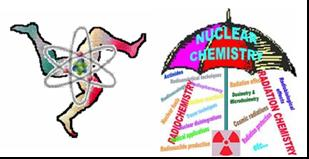Speaker
Jan Kameník
(Nuclear Physics Institute ASCR)
Description
Formation of moldavites (tektites from Central Europe) was connected with a large meteorite impact to Ries region in western Bavaria in Germany 14.5 million years ago. The parent materials for moldavites have usually been assigned to the uppermost layer of pre-impact sediments and sedimentary rocks dated to Middle Miocene. According to several geochemical indicators, ash from biomass burned at the early stage of the impact may have contributed to the parent materials. Moldavites contain in the glass matrix small inclusions of pure silica – lechatelierites. To evidence the possible biogenic component in moldavites, composition of lechatelierites separated from moldavites has been compared with composition of silica phytoliths extracted from barley (Hordeum vulgare L.) – a representative of a Poaceae (grass) plant family. Silica phytoliths are biogenic opal objects formed by solidification of dissolved forms of silicon by some higher plants. They are, after plant's death and decay, preserved in soil and sediments.
The samples of lechatelierites and barley silica phytoliths were analysed by instrumental neutron activation analysis (INAA) in the short and long time irradiation modes. Both types of materials consist mainly of silica, but many other elements are present in minor and trace quantities. Despite several differences, the overall elemental pattern observed in phytoliths for both major and trace elements is similar to that observed in lechatelierites, especially the high K/Na ratios.
This study has been supported by the Czech Science Foundation grant 205/09/0991.
Author
Jan Kameník
(Nuclear Physics Institute ASCR)
Co-authors
Dr
Jiří Mizera
(Nuclear Physics Institute ASCR)
Dr
Zdeněk Řanda
(Nuclear Physics Institute ASCR)
